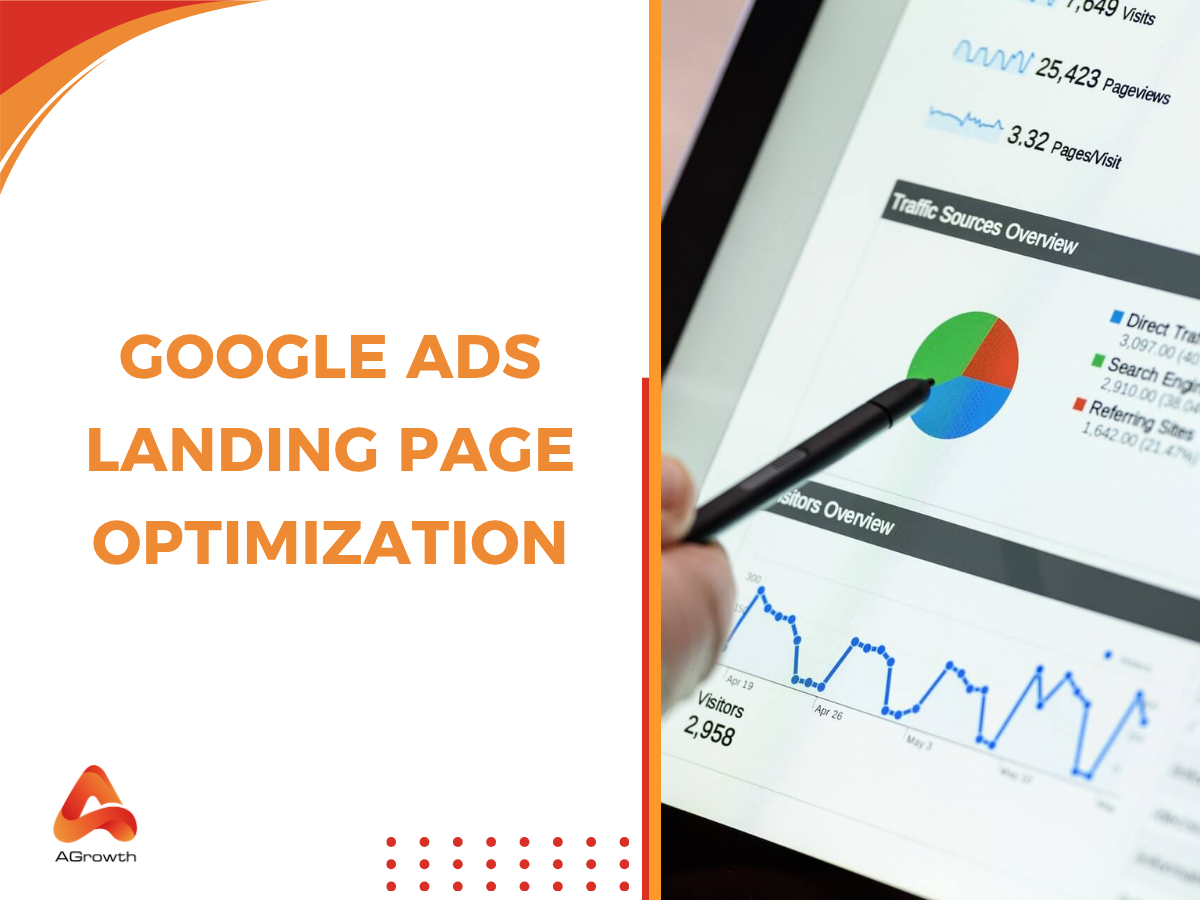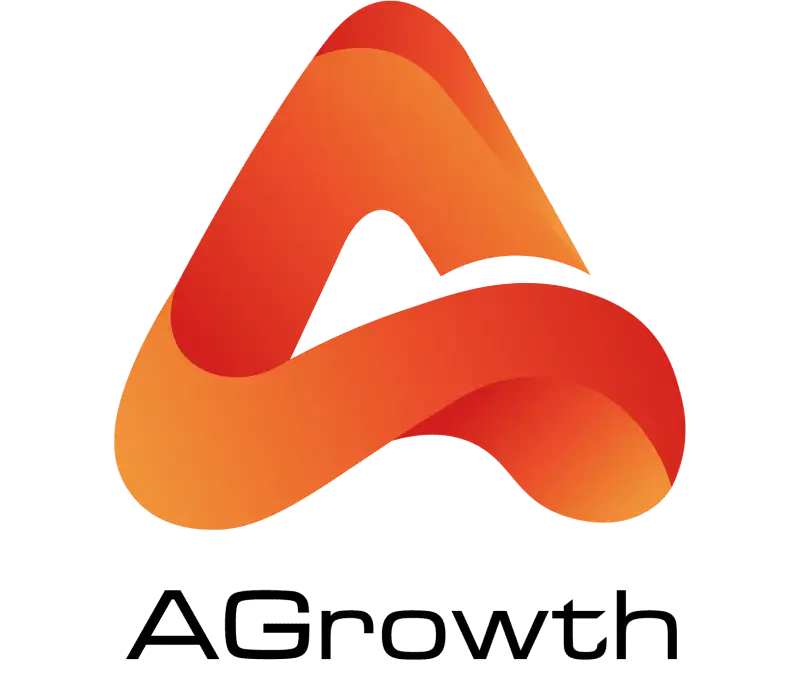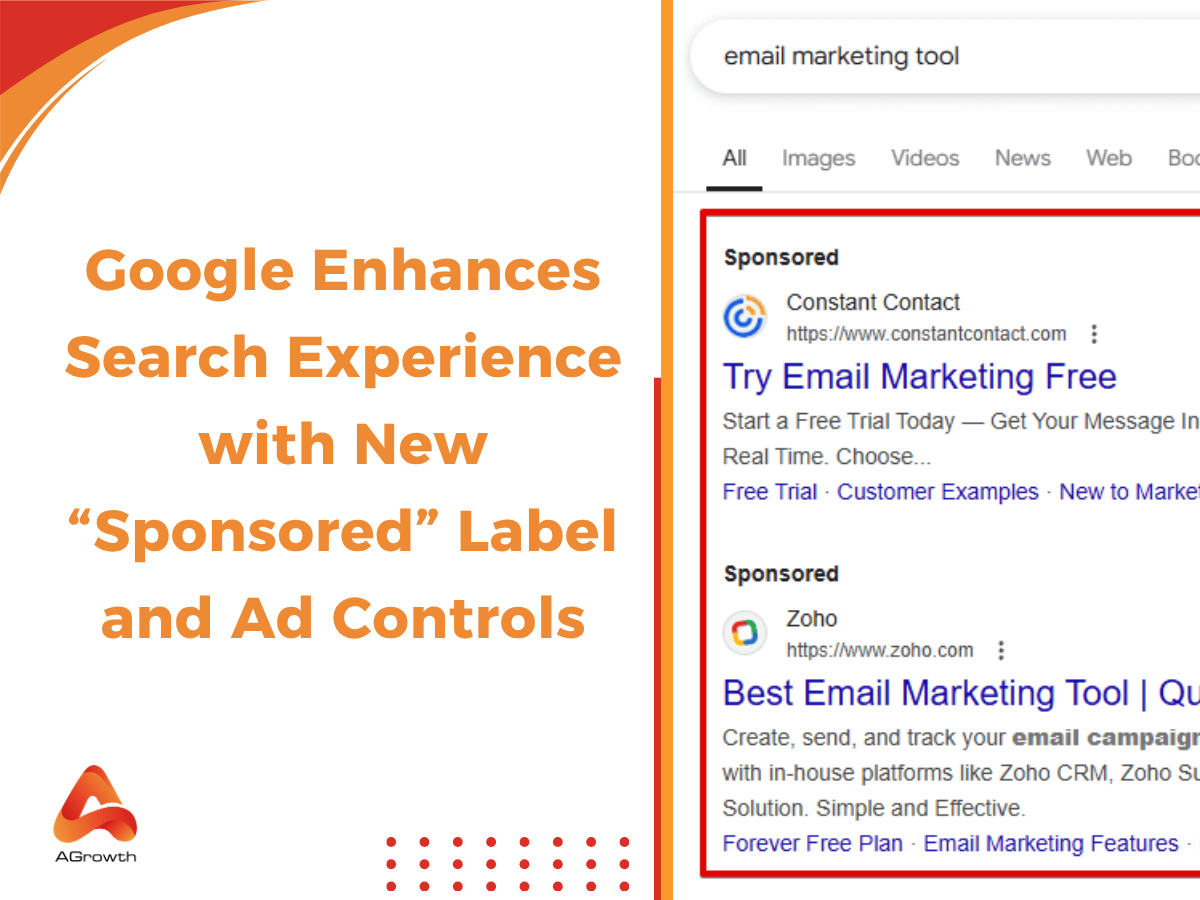
Table of Contents
Google Ads Landing Page Optimization: Boost CTR and Conversions
You can spend thousands of dollars driving clicks from Google Ads, but if your landing page is not optimized, you’re essentially pouring money into a leaky bucket. A great ad can win the click, but only a well‑structured landing page can win the conversion. Google itself emphasizes that “your landing page is an important factor in determining your Quality Score and Ad Rank” (Google Ads Help).
In this article, we’ll explore why optimizing your Google Ads landing pages is critical, how to implement best practices, and advanced strategies that go beyond the basics. You’ll also learn how to measure landing page performance, assess your Google Ads landing page experience, and implement actionable improvements that drive ROI.
Why You Should Optimize Your Google Ads Landing Pages?
Optimizing landing pages is not just about aesthetics—it directly affects your ad performance, spend efficiency, and ultimately, your business revenue.
Quality Score and Ad Rank
Google uses landing page experience as one of the core components of Quality Score. If your landing page is relevant, loads quickly, and matches user intent, you’ll achieve higher Google Quality Scores, which can reduce CPC and improve Ad Rank. Conversely, a poor page experience inflates costs and reduces visibility.
Conversion Rates
Even if your ad gets high CTR, the landing page is the gatekeeper to conversions. According to Apexure, poorly optimized PPC landing pages can lose 30–50% of potential conversions simply due to slow load times, cluttered design, or mismatched messaging.
User Trust & Engagement
A Google landing page is often the first deep interaction a prospect has with your brand. When it is seamless, mobile-friendly, and transparent, you’re not just increasing conversions—you’re building trust and credibility.
Advanced PPC Landing Page Strategies
A truly effective landing page does more than meet basic expectations—it becomes a conversion engine that maximizes the return on every advertising dollar. When competing in the fast-paced world of Google Ads, advanced strategies can give you the edge needed to outperform competitors and drive higher ROI.
1. Optimize Page Speed
Page speed is often the very first impression users have of your site. A slow-loading page frustrates visitors and causes them to bounce, especially on mobile devices where attention spans are shorter. According to Mayple, advertisers should aim for a load time under 3.4 seconds. Achieving this requires compressing images without compromising quality, implementing browser caching, leveraging Content Delivery Networks (CDNs), and removing unnecessary scripts or plugins. Faster pages improve user experience, reduce drop-offs, and directly contribute to better Quality Scores.
2. Maximize Lead Generation Opportunities
Every element of your landing page should be designed to capture potential leads. This means making your phone number, email, or contact form highly visible and ensuring your primary call-to-action stands out. Consider offering multiple conversion paths—such as sign-ups, call buttons, or downloadable resources—so users can choose the method that feels most natural to them. By doing so, you increase the chances of engagement and reduce the likelihood of wasted clicks.
3. Use a Sticky Header
One subtle but powerful tactic is the use of a sticky header. As users scroll down the page, a simple header containing your value proposition and a clear call-to-action remains visible. This minimizes friction by allowing visitors to take action at any point without having to scroll back to the top. A sticky header is especially useful for long-form landing pages, ensuring conversion opportunities are always within reach.
4. Match Content to Your Ad
Message match is one of the most critical factors for optimizing Google Ads landing pages. When users click on an ad, they expect the page to reflect the promise of that ad. Aligning your headlines, copy, and visuals with the ad’s messaging builds trust, keeps users engaged, and improves relevance. Using target keywords in your headline and opening paragraph reinforces continuity and can significantly improve your Quality Score.
5. Optimize the Content Length
There is no one-size-fits-all answer to how long a landing page should be. The key is to provide enough information to communicate your offer clearly, without overwhelming visitors. Short, direct introductions reassure users that they are in the right place, while concise body copy reinforced with keywords helps with SEO and readability. Testing different content lengths is crucial: in some cases, a brief page may convert better, while in others, a longer page that fully addresses objections might perform best.
6. Create Thank You Pages
The user journey doesn’t end with a completed form. Redirecting visitors to a thank-you page after conversion is a best practice that serves multiple purposes. It confirms that their action was successful, builds trust by summarizing what they will receive, and offers opportunities for further engagement. You can use this space to display testimonials, showcase customer stories, or encourage users to share, download additional resources, or explore related services. A well-designed thank-you page not only enhances user satisfaction but also strengthens your brand credibility.
7. Use Social Proof
Social proof remains one of the most powerful persuasion techniques. Highlighting testimonials, customer reviews, star ratings, or logos from well-known clients builds trust and reduces perceived risk. Design these elements to be visually prominent, using bold quotes or badges that stand out from the rest of the page. When potential customers see that others have had positive experiences, they are more likely to feel confident in taking the same action.
How to Optimize Your Landing Pages to Drive Conversions
Now that we've reinforced the critical importance of landing page optimization, let's move into the practical application. A high-converting landing page is a masterful blend of art and science—it requires a deep understanding of user psychology, clear communication, and a frictionless design. The goal is to create an experience that is not only persuasive but also helpful and trustworthy.
Here, we will break down the essential components you need to refine to turn your landing pages into conversion powerhouses.
1. Craft a Compelling and Clear Value Proposition
Your value proposition is the single most important element on your landing page. It must answer the user's primary question: "What's in it for me?"
-
Headline: Your headline should be a direct echo of your ad copy (message match) and clearly state the primary benefit of your offer. It needs to grab attention and be understood in seconds.
-
Bad Example: "Welcome to Our Site"
-
Good Example: "Get Certified as a Project Manager in 6 Weeks"
-
Sub-headline: Use this to elaborate on the headline, providing a bit more detail or a secondary benefit.
-
Example: "Join over 10,000 professionals who advanced their careers with our industry-recognized PMP course."
-
Bullet Points: Break down the core features and benefits into easily scannable bullet points. Focus on outcomes, not just features.
-
Feature: "10 GB of cloud storage."
-
Benefit: "Securely access all your project files from anywhere, anytime."
2. Design for a Frictionless User Experience (UX)
A confusing or slow landing page is a conversion killer. Your design should guide the user effortlessly toward the call-to-action (CTA).
-
Mobile-First Design: Google prioritizes mobile-first indexing, and a significant portion of your paid traffic will come from mobile devices. Your page must be fully responsive and easy to navigate on a small screen. Buttons should be easily tappable, and forms should be simple to complete.
-
Fast Loading Speed: Page speed is a critical factor. As Google Support notes, "The faster your landing page loads, the more likely you are to get a conversion." Use tools like Google PageSpeed Insights to diagnose and fix issues. Compress images, leverage browser caching, and minimize code.
-
Clear Visual Hierarchy: Use size, color, and placement to draw the user's eye to the most important elements in a logical order: headline, value proposition, form/CTA, and supporting proof.
3. Build Trust and Credibility
Users are inherently skeptical, especially when it comes to sharing personal information or making a purchase. Your landing page must actively build trust.
-
Social Proof: Display testimonials, customer reviews, logos of well-known clients, or case studies. Numbers are powerful (e.g., "Trusted by 50,000+ businesses").
-
Trust Seals and Badges: Include security badges (SSL), industry awards, or money-back guarantees.
-
Professional Design: A clean, modern, and error-free design signals professionalism and legitimacy. Typos and broken images are immediate red flags.
-
Clear Contact Information: Provide an easy way for users to contact you (phone number, email, or address). This shows that a real business stands behind the offer.
4. Create a Powerful and Unmistakable Call-to-Action (CTA)
Your CTA is the gatekeeper to your conversion. It needs to be compelling, clear, and easy to find.
-
Action-Oriented Language: Use strong verbs that encourage action. Instead of "Submit," try "Get Your Free Quote" or "Download the Ebook Now."
-
Contrasting Color: The CTA button should stand out from the rest of the page. Use a color that contrasts with your background and other page elements.
-
Strategic Placement: Place your CTA "above the fold" so users see it without scrolling. For longer pages, it's a good practice to repeat the CTA further down.
-
Single, Focused Goal: Avoid cluttering your landing page with multiple competing CTAs. Every element on the page should support a single conversion goal. Remove distracting navigation links that could lead the user away from the page.
Note: The concept of "above the fold" has evolved with varying screen sizes, but the principle remains: your most critical elements, including the primary CTA, should be immediately visible upon page load.
AGROWTH - GOOGLE AGENCY ACCOUNT
⭐ Managed campaigns with expert guidance
⭐ Flexible invoice-based billings, custom top-ups
⭐ High resistance to suspension via agency tier
⭐ Quick fund transfer to new account if needed
⭐ Priority support via Google Partner channel
⭐ Lower fees from 3-5%
⭐ Eligible for bonus credit up to $384
How to Measure Landing Page Performance
Data is the backbone of any successful optimization strategy. Without accurate measurement, you're essentially flying blind. To truly understand the impact of your efforts, you need to track the right metrics and know how to interpret them.
Let's look at the key performance indicators (KPIs) and tools you should be using to evaluate your landing pages.
Key Metrics to Track
-
Conversion Rate: This is the ultimate measure of success. It's the percentage of visitors who complete your desired goal. (Conversions / Total Visitors) * 100.
-
Cost Per Conversion / Acquisition (CPA): This tells you how much you're spending on ads to get one conversion. (Total Cost / Total Conversions). Your goal is to lower this over time.
-
Bounce Rate: The percentage of visitors who leave your site after viewing only one page. A high bounce rate can indicate a disconnect between your ad and landing page, slow load times, or a poor user experience.
-
Time on Page: The average amount of time users spend on your landing page. While not a direct indicator of conversions, it can signal engagement. Low time on page might mean your value proposition isn't compelling enough to hold attention.
-
Landing Page Experience (in Google Ads): This is Google's own rating ("Below average," "Average," or "Above average"). As stated by Google, this metric is a "measure of how well your website gives people what they're looking for when they click your ad." Improving this can directly improve your Quality Score.
Tools for Measurement
-
Google Analytics: This is your primary tool for tracking user behavior. Set up goals to track conversions, monitor bounce rates, analyze user flow, and segment your audience to see how different traffic sources perform.
-
Google Ads: The Google Ads platform itself provides crucial metrics like conversion rate, CPA, and the Landing Page Experience rating.
-
Heatmap and Session Recording Tools (e.g., Hotjar, Crazy Egg): These tools provide qualitative insights. Heatmaps show you where users are clicking, moving their mouse, and scrolling. Session recordings let you watch anonymized recordings of real user sessions, revealing points of friction you might otherwise miss.
How to Check Your Landing Page Experience
Google is transparent about what it looks for in a landing page. Regularly auditing your pages against their guidelines is crucial for maintaining a high Quality Score and providing a positive user experience.
Here’s a checklist based on Google's recommendations to evaluate your landing page experience:
-
Offer Relevant, Useful, and Original Content:
-
Is your landing page directly relevant to the user's search term and your ad text?
-
Does it provide useful information about what you're advertising?
-
Avoid simply mirroring content from other sites. Provide unique value.
-
Promote Transparency and Foster Trust:
-
Is it easy for users to find your contact information?
-
If you request personal information, do you clearly state why and have a visible privacy policy?
-
Are you clear about your business model and how your site operates?
-
Ensure Easy Navigation (Especially on Mobile):
-
How does the page look and function on a mobile device? Is it easy to read and navigate without pinching or zooming?
-
Is the design clean and uncluttered?
-
Is the most important content visible without excessive scrolling?
-
Decrease Landing Page Loading Time:
-
Use Google PageSpeed Insights to test your load time on both mobile and desktop.
-
Are your images optimized for the web?
-
Is your code clean and efficient?
By regularly asking these questions, you can proactively identify and fix issues that could be harming your Landing Page Experience score and, by extension, your entire campaign performance. To know more about how to improve landing page experience, check our post!
FAQs
How does landing page experience affect Quality Score and CPC?
Landing page experience is a key factor in Google’s Quality Score. When users have a positive experience — fast loading speed, relevant content, and easy navigation — your Quality Score increases. This can lead to a lower cost per click (CPC) and higher ad rankings. On the other hand, a poor experience can cause your ads to pay more for clicks and appear less frequently.
What are the best practices for aligning ad copy and landing page content?
To align your ad copy with your landing page, make sure both share consistent messaging, keywords, and intent. If your ad promises “Free Shipping on Running Shoes,” the landing page should highlight that same offer above the fold. Use the same tone, visuals, and call-to-action (CTA) to maintain message match and reassure users they’ve landed in the right place.
How many variations or A/B tests should you run on a landing page?
Start by testing one major variable at a time — such as headline, CTA placement, or hero image. Running 2–3 variations per test is ideal to gather meaningful data without overwhelming your traffic. Once you identify the winning version, continue optimizing secondary elements. A/B testing should be an ongoing process to maintain performance improvements over time.









Your comment